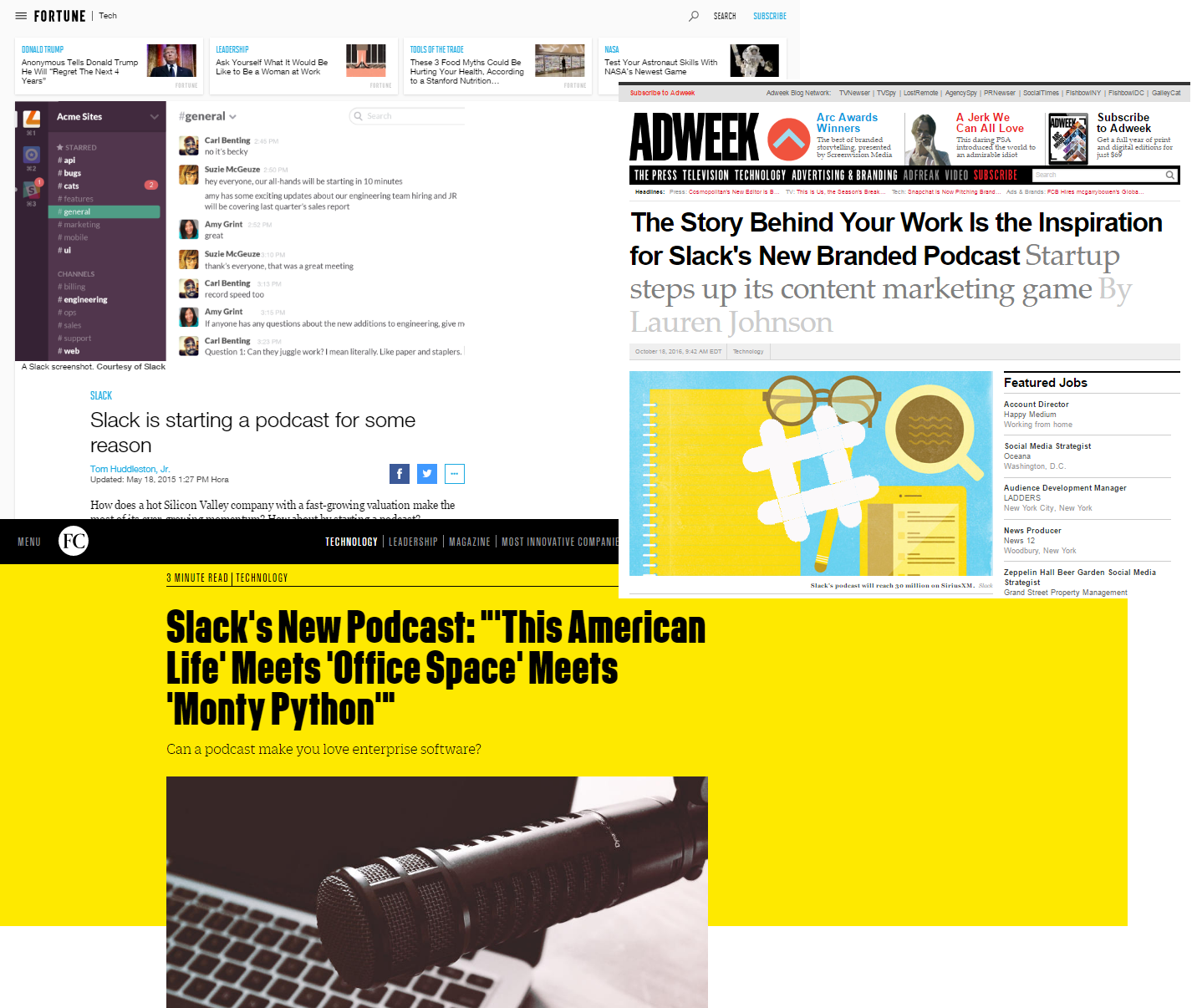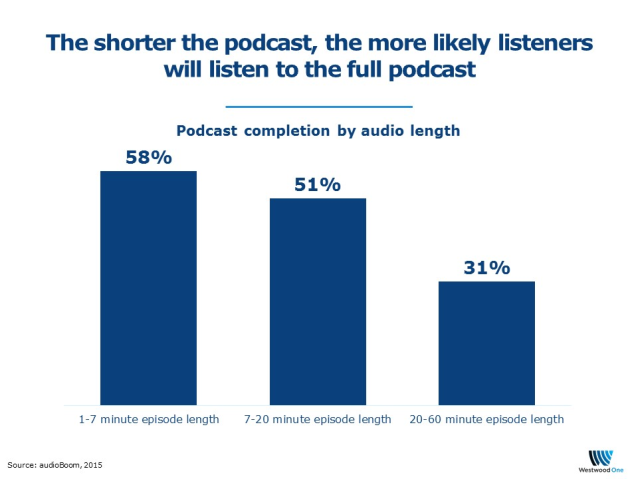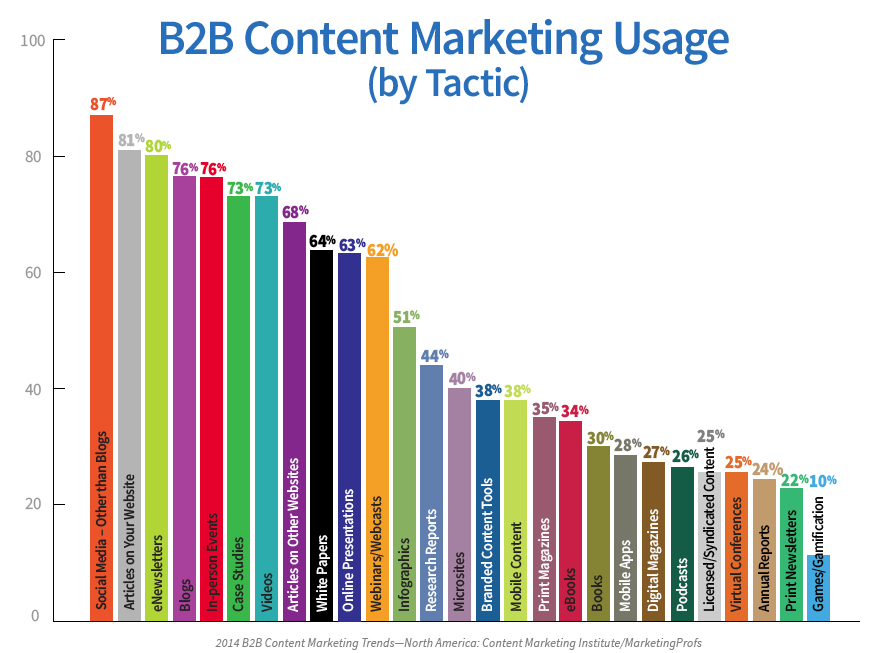
If you have been writing blogposts for some time, maybe you are now ready for ways to tell your story or share your ideas.
If you haven’t tried other content formats other than the editorial aspect, to begin with a podcast is an excellent alternative.
A podcast is an on-demand radio program that’s generally conducted by one or more people.
It can be focused on the individual opinion of the podcaster or focus on a topic or both. Since they are previously taped, your audience can listen to them wherever and whenever they want.
Why do brands use podcasts in their content marketing strategy?
Content with an audio format is being used in creative ways by the most prestigious content marketing brands such as Slack (Slack Variety Pack; Work in Progress) or HubSpot (The Growth Show).
Compared with other popular content formats (like for example videos or blogposts), implementing a podcast cycle as a tactic in your content marketing strategy and offers a series of advantages that I explain bellow:
1. Creating podcasts guarantees a greater reach
Let’s take a look at the statistics for a second. According to a report from Edison Research:
-
The number of podcast listeners has increased 71% in the last 3 years
-
1 out of 4 people between the ages of 12 and 54 have listened to a podcast in the last month
-
21% of Americans (approximately 57 million people) listen to podcasts. Want to know who has the same number of users in this country? TWITTER.

However…
“30 million active blogs exist on the Internet, but only 200.000 podcasts are active”. – Rob Walch
And according to the latest studies regarding content marketing in the USA and LATAM,
only 10% of the brands are using podcasts within their content strategy.
As you enter a content format that is less used, you have greater possibilities of reaching your audience easily and without much noise.
Even if you position yourself in podcast directories such as iTunes (we take a look at this later on) you can have a prominent place in the less conventional search engine brands, but commonly used by users.
2. Creating podcasts can be an excellent way to increase your conversions
Creating a podcast can improve your conversions and sales. Some case studies discovered that the audio itself has increased the conversion rate up to 10,4%. Even, if you are successful with your podcast, you can offer your brand alternative ways to generate revenue.
3. Creating podcasts positions you as a leader in your industry
With a podcast, you can share information with your audience and position yourself as an industry expert. For example, you can interview leaders and industry experts regarding valuable topics. You can even generate greater confidence with them if you talk about them instead of just exchange emails.
This improves your reputation, makes you stand out from your competition, motivates your potential clients so they search for more information about you and you get the attention of new talent (or even the press).

Slack got the attention of the media such as Fortune, AdWeek or Fast Company when it debuted in podcasts. Image: our own file.
4. Creating podcasts generates greater engagement with your audience
It allows you to build a greater connection with your audience.
To listen to someone’s voice generates more proximity than your words do on a screen.
With this type of connection, you gain the confidence of your audience and get their attention in less time than it takes to read a post.
5. Creating podcasts gets the attention of your audience longer
In terms of brand content, a blogpost worth reading with 1,500/2,000 extension words probably gets the attention of your audience for 5 or 10 minutes.
However, if it were longer, you probably wouldn’t read it all the way or end up scanning it. A podcast can be listened to for at least 30 minutes and your audience won’t be distracted with something else.
In addition, your audience can take you wherever they go, without interrupting their tasks.
Podcasts are different than any other forms of content since they demand all our attention and can be consumed while we do other tasks simultaneously.
And you know what the best part is? To start off with a podcast requires less time, effort and money than you can imagine. Below I show you all you need to know to create a podcast for your brand.
Incorporate this Technique into your Marketing Strategies:
How to Create a Podcast
Step 1: Planning
Many will say that the first step in creating a podcast is to buy a microphone. MISTAKE!
As in all the content marketing tactics, the first step to begin making podcasts is to answer some questions:
-
What are your goals? To generate notoriety, get more engagement with your audience, add value to your users…
-
How do you differentiate from the rest of the podcasts that are circulating out there? Does a niche exist that no one is covering? Does a topic exist where you can speak better about (or at least differently) than the rest?
In the same way that you plan content for your blog or social networks, if you plan your podcasts, the routine production will be easier. It can also help you get a clearer picture about what you need to produce in each episode.
It’s important that you define:
-
Name and logo
-
How many episodes it will have
-
How frequently will it come out
-
What topics will be covered
-
What format will it have (only one speaker, two speakers or invited guests and interviews…)
-
How long will each episode last

Studies show that 22 minutes is the magic number: but as usual, you end up finding out what the magic numbers is. Image via: http://rainnews.com/
This way your podcast is organized and professional:
-
Make a list of the tentative tittles for each episode and create a calendar and follow a chronological order.
-
You don’t need an exhaustive script. Simply write a guide to point our the main program blocks and the topics you want to cover, that way you know how to direct the conversation and how many minutes you can spend on each block.
-
Practice beforehand what you are going to say, that way you are prepared when you press the REC button.
Step 2: Record
Many blogposts related to this topic recommend that you spend a fortune on quality microphones, a start and ending curtain for each episode, rights to a song…And the list goes on and on.
I’m not saying these elements aren’t important (on the contrary, they add to a quality podcast) but at the beginning, you can get away without them.
Instead, I recommend that you invest a minimum amount in creating a podcast and use the elements you have at home (such as Art Attack, but please) test the reaction of your audience.
Apart from that, you can make some adjustments and start to invest in some USB microphones, a designer to create your podcast logo and a narrator for the introduction of your podcast.
When you record a podcast, you can follow this simple recipe:
-
Call your conductors or guests on Skype or Google Hangouts.
-
Tape their conversation with software such as Call Recorder for Skype, Google Voice or Pamela.
-
When you have finished, edit the audio file with GarageBand or Audacity.
-
If you want to increase your combo podcast, record a good post-production with Auphonic.
-
And look for music and sound effects on Freesound or Free Music Archive.
A few tips:
-
Make sure you make the call in a quiet environment.
-
If you have co-conductors, consider the possibility of having each one tape their conversation on their own computers. If you have several audio files and combine them in post-production, the sound comes out cleaner.
Step 3: Upload it
Once you are finished taping and post-producing your podcast, you can upload it in different directories. Some well-known sites are:
Step 4: Promote it
Creating a podcast is simple. The hard part is getting people to listen to it. – Marc Maron
You need to promote your podcast so people listen to it, the same way you would promote visual content or a written piece.
-
Create striking tittles for each episode and optimize them with keywords.
-
Invite your interviewees to share their episode via email or social networks.
-
Broadcast it in your e-newsletter.
-
Program several publications on your social networks through Postcron, that way you can get constant traffic.
-
Create a section or special category on your blog and add it to the iTunes feed.
-
Create a blogpost for each episode with embedded audio. Here are three options:
-
develop key points about the cited resources on the podcast (such as Social Media Examiner), or
-
create a complete transcription (such as Moz).
After what could have been a career-ending injury, a concert pianist finds an unexpected path back to his art. https://t.co/dwmtBlRAT0 🎹 pic.twitter.com/YpQevAy9yc
— Slack Stories (@SlackStories) January 23, 2017
A creative way to promote a podcast is to show a small preview on a multimedia format, redirecting it to the site so the complete audio can be listened to.
Paso 5: Measure it
And to measure I don’t mean to jot down an infinite number of numbers for the sake of completing an Excel file.
Measure the effectiveness of your podcast by asking yourself what is the objective you want to reach with your podcast, and from there select only three metrics to help you determine if you have reached that objective.
You can use some metrics such as:
-
Quantity of reproductions
-
Quantity of subscribers
-
Quantity of downloads
-
Quantity of shares
-
Quantity of visits to the podcast section and the time spent
-
Quantity of traffic you bring to your site from the directories where your podcast is indexed
You can even:
-
Include in the podcast a description of a URL subscription to your newsletter and measure how many people actually subscribe to your podcast.
-
Or you can offer a unique discount code to your listeners and then measure how many actually used it. The possibilities are infinite.
To create podcasts is an excellent alternative to innovate in the creation of brand content in order to reach a great number of potential listeners.
If you take your time and plan each episode, invest in the sound quality, and above all, if you have a good content promotional strategy, you can end up with a powerful tool in your content marketing arsenal.
Was this post useful? I invite you to take a look at other articles that might interest you:


